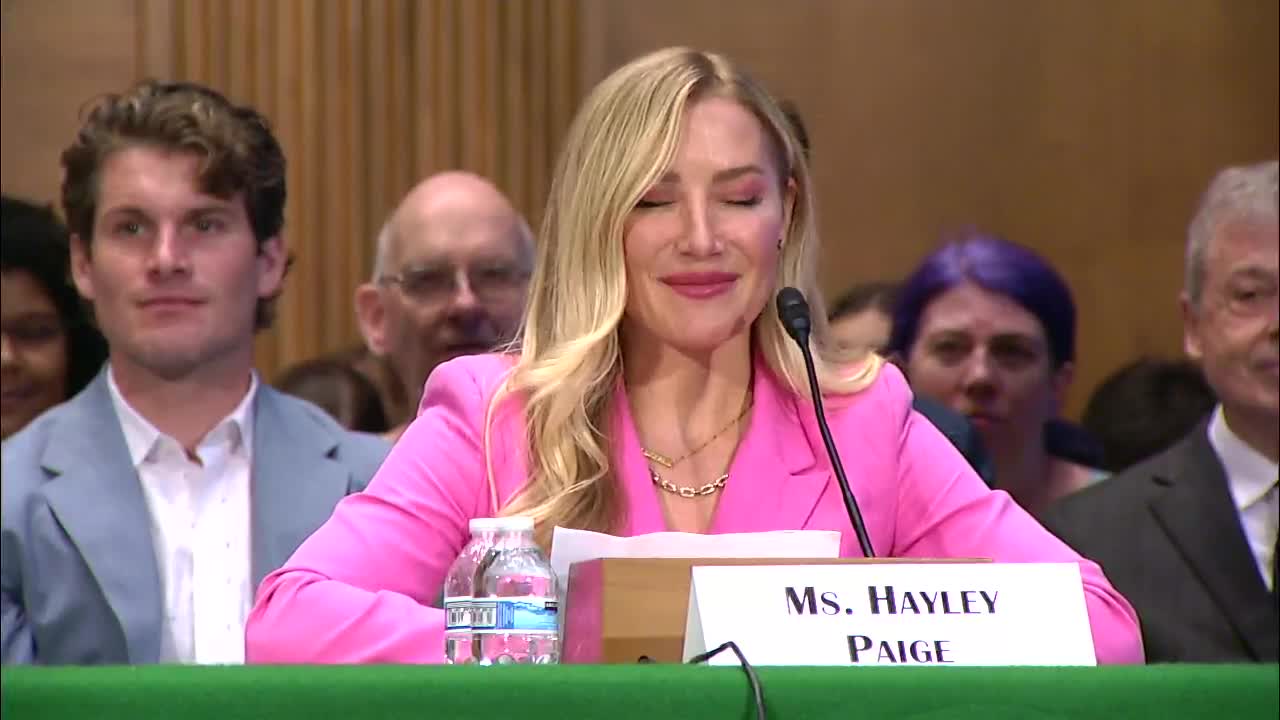Designer battles non compete clause to reclaim her dream
July 30, 2024 | Banking, Housing, and Urban Affairs: Senate Committee, Standing Committees - House & Senate, Congressional Hearings Compilation

This article was created by AI summarizing key points discussed. AI makes mistakes, so for full details and context, please refer to the video of the full meeting. Please report any errors so we can fix them. Report an error »

In a recent government meeting, a powerful testimony highlighted the detrimental effects of non-compete clauses on workers, particularly in creative industries. The speaker, a former wedding dress designer, shared her journey from achieving significant success—having her designs featured in over 300 stores and recognized by Vogue—to facing severe restrictions imposed by a non-compete agreement she signed at the age of 25.
After years of dedication to her craft, the designer found herself unable to work in her field for seven years due to a legal injunction that not only barred her from using her birth name but also prevented her from practicing her trade. This situation left her financially devastated and questioning the fairness of the justice system. Despite her efforts to renegotiate her contract, she was met with a lawsuit from her former employer, which ultimately filed for bankruptcy during the litigation process.
The designer's testimony underscored the broader implications of non-compete clauses, which she argued stifle innovation and restrict individuals from contributing to the economy. She emphasized that while corporations are free to hire and profit, employees face significant limitations that can hinder their livelihoods and creativity.
Senator Smith from Minnesota expressed gratitude for the testimonies shared, noting that many workers do not fully understand the long-term implications of the agreements they sign. The meeting also touched on the Federal Trade Commission's (FTC) potential rule changes regarding non-compete clauses, which could impact a significant portion of the workforce—estimated at one in five workers in the U.S.
The designer concluded her testimony with a call for fair competition, advocating for a system that allows individuals to pursue their passions without the fear of legal repercussions. Her story serves as a poignant reminder of the challenges faced by many workers bound by restrictive agreements and the need for reform in labor practices to foster innovation and economic growth.
After years of dedication to her craft, the designer found herself unable to work in her field for seven years due to a legal injunction that not only barred her from using her birth name but also prevented her from practicing her trade. This situation left her financially devastated and questioning the fairness of the justice system. Despite her efforts to renegotiate her contract, she was met with a lawsuit from her former employer, which ultimately filed for bankruptcy during the litigation process.
The designer's testimony underscored the broader implications of non-compete clauses, which she argued stifle innovation and restrict individuals from contributing to the economy. She emphasized that while corporations are free to hire and profit, employees face significant limitations that can hinder their livelihoods and creativity.
Senator Smith from Minnesota expressed gratitude for the testimonies shared, noting that many workers do not fully understand the long-term implications of the agreements they sign. The meeting also touched on the Federal Trade Commission's (FTC) potential rule changes regarding non-compete clauses, which could impact a significant portion of the workforce—estimated at one in five workers in the U.S.
The designer concluded her testimony with a call for fair competition, advocating for a system that allows individuals to pursue their passions without the fear of legal repercussions. Her story serves as a poignant reminder of the challenges faced by many workers bound by restrictive agreements and the need for reform in labor practices to foster innovation and economic growth.
View full meeting
This article is based on a recent meeting—watch the full video and explore the complete transcript for deeper insights into the discussion.
View full meeting